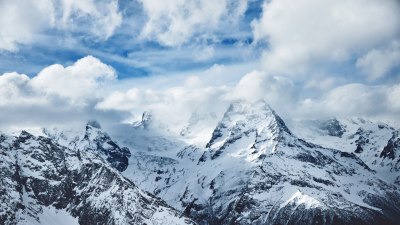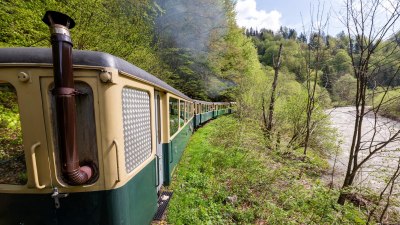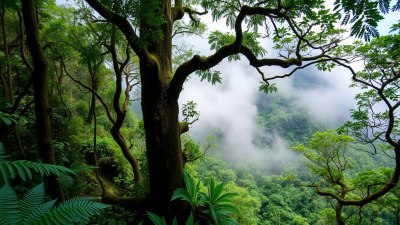How to Plan a 12-Day Adventure Through the Himalayas
Explore tips and insights to plan an unforgettable 12-day journey through the breathtaking Himalayas.

Image by bublikhaus on Freepik
Planning a 12-day adventure through the majestic Himalayas is a thrilling endeavor filled with excitement, beauty, and challenges. With towering peaks, rich cultures, and diverse landscapes, a trip to the Himalayas offers an unforgettable experience for any traveler. In this article, we will explore important aspects that you should consider when planning your adventure, including itinerary suggestions, essential gear, cultural tips, and much more.
Understanding the Region
The Himalayas span five countries—India, Nepal, Bhutan, Tibet, and Pakistan. Each region has its unique flavor, culture, and trekking routes. Before planning your itinerary, it’s crucial to choose which part of the Himalayas you want to explore. For example, popular trekking regions in Nepal include the Annapurna Circuit and the Everest Base Camp trek, while in India, you might explore regions like Ladakh and Himachal Pradesh.
Choosing the Right Time to Visit
The best time to visit the Himalayas largely depends on your selected region and the activities you intend to pursue. Generally, the peak trekking seasons are in spring (March to May) and fall (September to November). During these times, the weather is typically stable and skies are clearer, providing breathtaking views of the mountains. However, winter months can offer unique experiences like snow trekking in certain regions, while monsoon season (June to August) might lead to landslides and travel restrictions due to heavy rainfall.
Crafting Your Itinerary
When planning a 12-day adventure, it’s essential to craft a well-thought-out itinerary that balances trekking, exploration, and rest days. Here’s a sample itinerary for a 12-day adventure in the Nepalese Himalayas:
Day 1: Arrive in Kathmandu.
Day 2: Explore Kathmandu’s cultural sites such as Swayambhunath Stupa and Pashupatinath Temple.
Day 3: Fly to Lukla, then trek to Phakding.
Day 4: Trek from Phakding to Namche Bazaar.
Day 5: Acclimatization day in Namche; explore nearby villages and enjoy stunning views.
Day 6: Trek from Namche Bazaar to Tengboche Monastery.
Day 7: Continue to Dingboche, enjoying the scenery along the way.
Day 8: Acclimatization day in Dingboche; optional hike to Nagarjuna Hill.
Day 9: Trek from Dingboche to Lobuche.
Day 10: Hike to Everest Base Camp and then return to Gorak Shep.
Day 11: Sunrise at Kala Patthar, followed by the return trek to Pheriche.
Day 12: Trek back to Namche and then descend to Lukla, followed by a flight back to Kathmandu.
Preparing for the Trek
Once your itinerary is set, preparing for the physical demands of trekking in the Himalayas is crucial. Ensure you engage in regular physical fitness leading up to your trip, incorporating both cardio and strength training to build endurance. Hiking on local trails can also help acclimatize your body to the trekking conditions. Keep in mind that the altitude in the Himalayas can affect everyone differently, so it's wise to take acclimatization days seriously to prevent altitude sickness.
Essential Gear and Packing List
Proper gear and equipment can make a significant difference in your trekking experience. Here’s a list of essential items to pack:
- Trekking boots
- Warm clothes (base layers, fleece jackets, insulated jackets)
- Waterproof jacket and pants
- Trekking poles
- Sleeping bag (rated for sub-zero temperatures)
- First aid kit
- Water purification system (tablets or a filter)
- Snacks (energy bars, nuts)
- Sunscreen, lip balm, and sunglasses
- Mosquito repellent
- Portable charger for electronics
Remember that you will be trekking in remote areas, so it's important to bring sufficient supplies and equipment while keeping your pack lightweight.
Cultural Etiquette
While trekking through the Himalayas, you will encounter diverse cultures and customs. It’s essential to be respectful of local traditions and practices. Learn a few basic phrases in the native language to show respect and truly connect with the locals. Always ask for permission before taking photos of people or their property. Dress modestly, especially when visiting religious sites, and be mindful of etiquette practices such as removing shoes when entering homes or temples.
Health and Safety Precautions
Maintaining your health and safety while trekking in the Himalayas is essential. Stay hydrated by drinking plenty of water throughout your trek. Consider carrying electrolyte tablets, which can help replenish lost salts. Additionally, be aware of the signs of altitude sickness, which may include headaches, dizziness, and fatigue. It's vital to descend to a lower altitude if you experience severe symptoms. Always travel with a group and with guides who are familiar with the region to ensure you have the support needed for any unforeseen circumstances.
Travel Insurance
Before embarking on your adventure, consider securing travel insurance specifically covering trekking, emergencies, and any potential evacuation needs. Many companies offer policies tailored to adventurous travelers, providing peace of mind while you navigate the highs and lows of your journey through the Himalayas. Ensure that your policy includes coverage for altitude-related emergencies, as this is a common concern when trekking unfamiliar terrain.
Post-Trek Experiences
After completing your trek, dedicate some time to exploring more of the rich culture and landscapes of the region. Return to Kathmandu and immerse yourself in its vibrant markets, try local delicacies, or partake in traditional festivals and cultural performances. If time allows, consider visiting Bhutan's stunning monasteries or India's beautiful hill stations post-trek for a fulfilling end to your Himalayas adventure.
A 12-day adventure through the Himalayas is not just a physical journey, but a transformative experience that enhances your appreciation for nature and diverse cultures. By carefully planning your itinerary, preparing adequately for the trek, respecting local customs, and ensuring your health and safety, you will create lasting memories that you will cherish forever. So lace up your trekking boots, pack your enthusiasm, and embark on this incredible journey through one of the world's most breathtaking landscapes.











